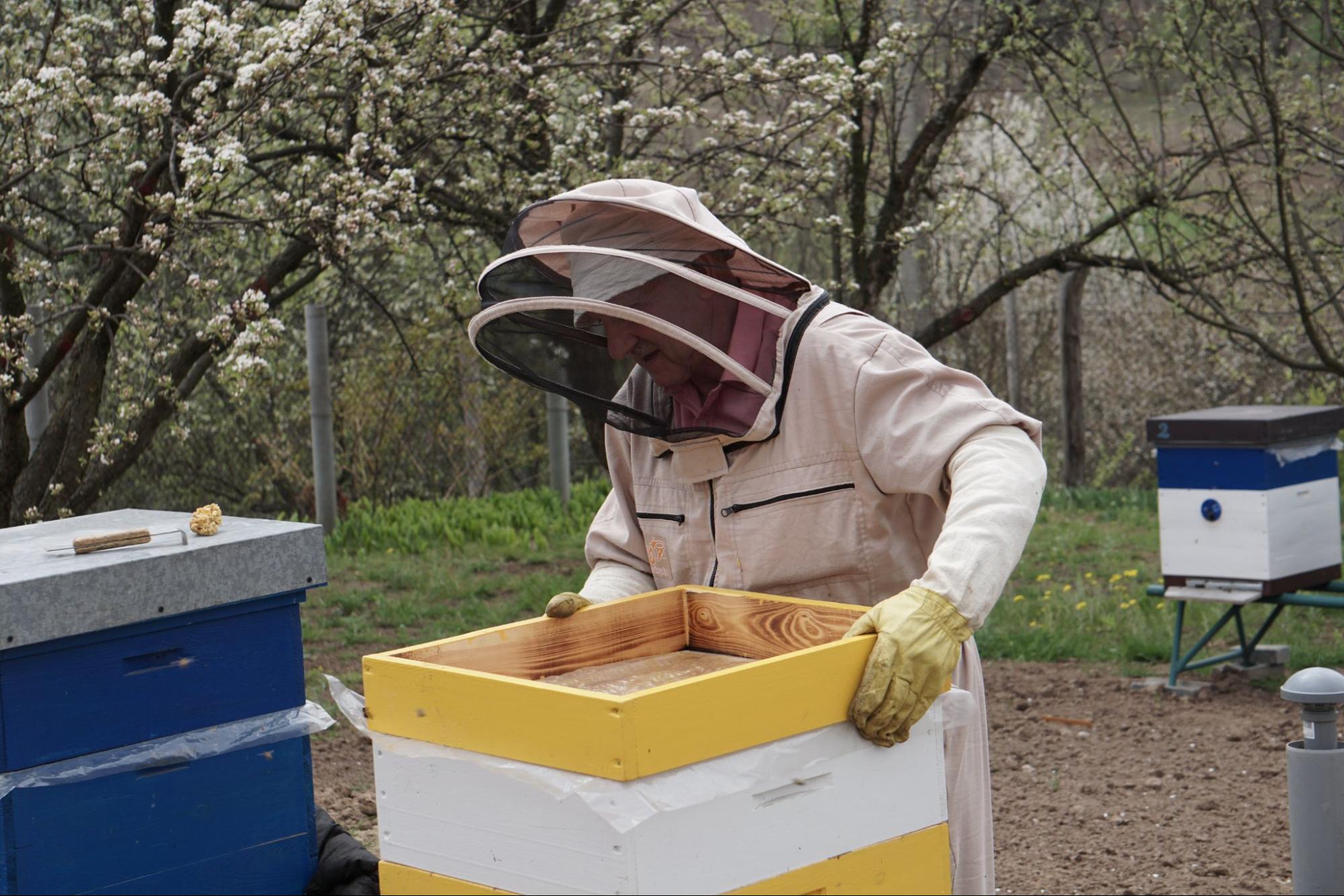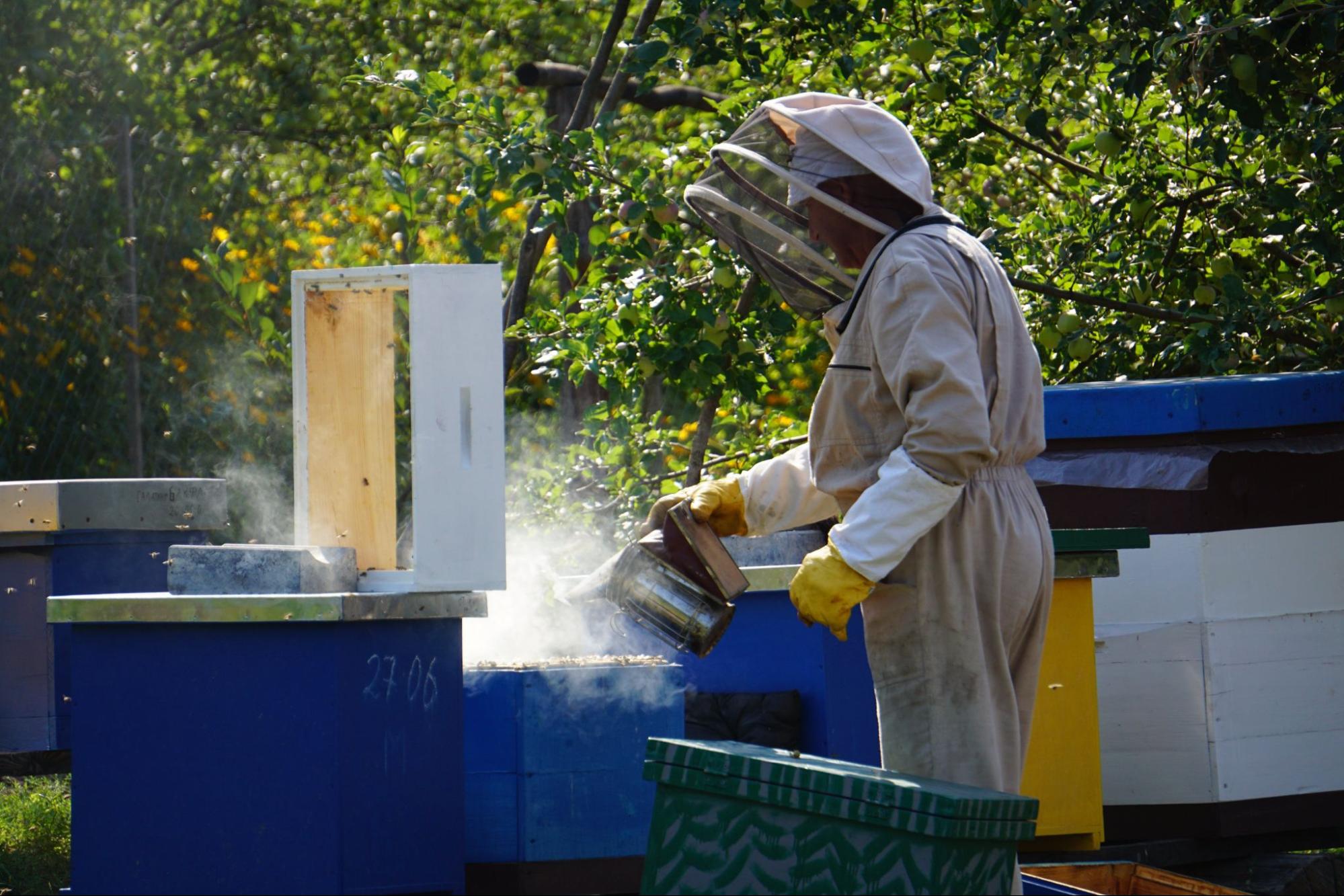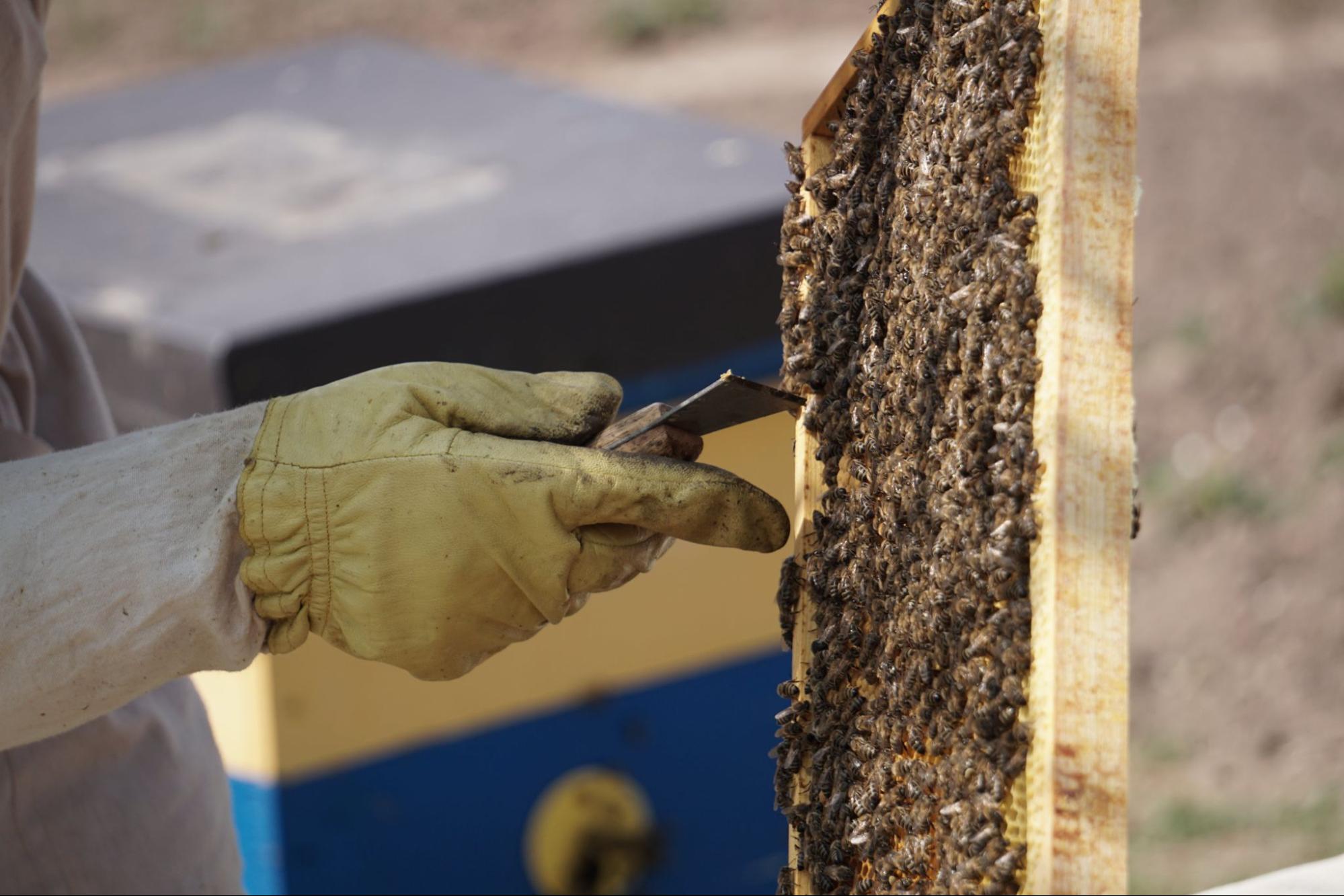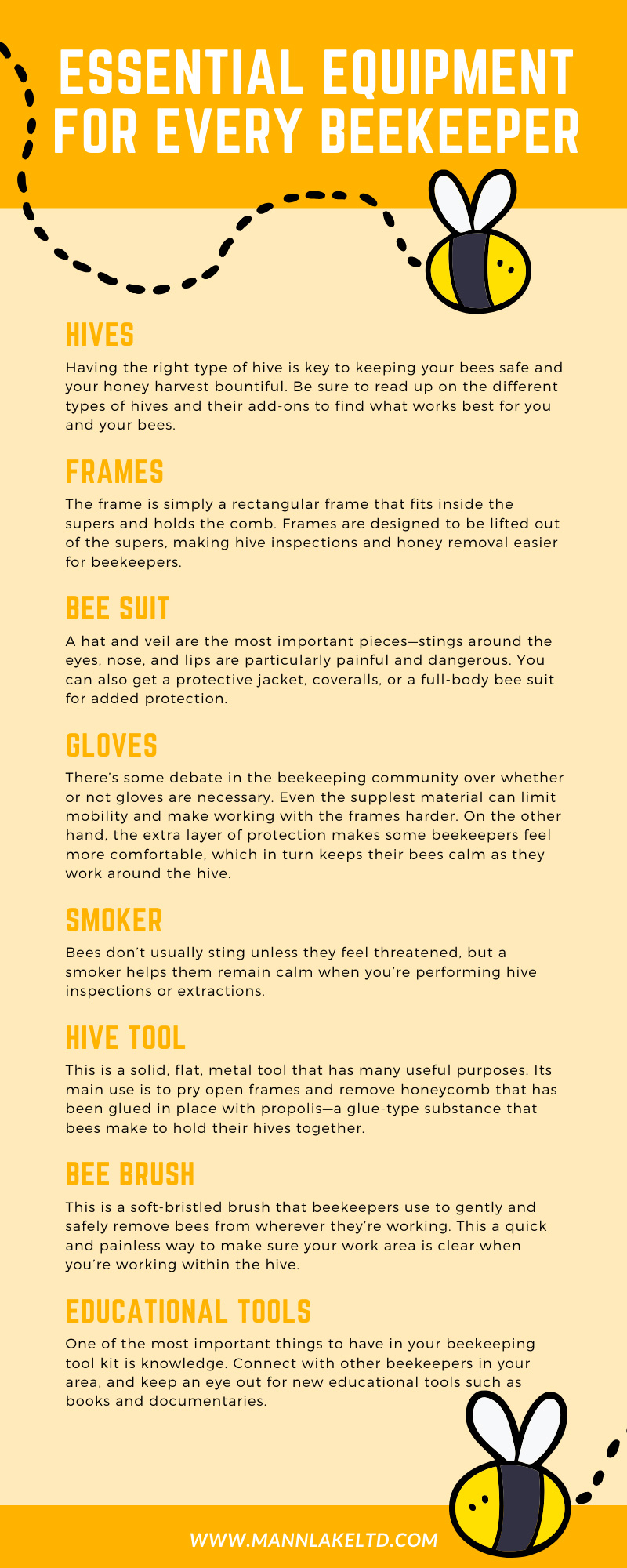Essential Equipment For Every Beekeeper
As a hobby, beekeeping offers many benefits, rewards, and challenges along the way. From a financial standpoint, beekeepers can make extra income by selling honey and other products made from beeswax and propolis. Your garden and local environment flourish due to the hard work of pollinating bees.
Best of all, you get to enjoy the fulfillment and satisfaction of taking care of creatures that are both valuable and fascinating. No matter your motivation, a few tools are necessary for a successful beekeeping journey. Here is the essential beekeeping equipment for every beekeeper to properly care for their bees.
Hives
Having the right type of hive is key to keeping your bees safe and your honey harvest bountiful. The type of hive you’ll need depends on where you’ll place it in your yard and how you want to raise your bees.
For example, if you want to harvest comb as well as plain honey, you might want a queen excluder in your hive to keep the brood out of the honey supers. If you live somewhere that gets a lot of rain, you’ll want a hive stand to keep the hive off the wet ground. Hive stands provide stability in any environment, and most beekeepers use them no matter where they live.
Be sure to explore the different hive types and their add-ons to find what works best for you and your bees.
Frames
These are among the most important components of the hive. The frame is simply a rectangular frame that fits inside the supers and holds the comb. This is where the queen lays her brood and where the rest of the colony stores its honey.
Frames are designed to be lifted from the supers, making hive inspections and honey removal easier for beekeepers. The foundation in the middle of the frame helps support the weight of the comb and gives your bees an even model to follow when they’re building their combs out of wax.
As with hives, there are many different types of hive frames that you can buy. You can choose frames made from wood or plastic and ones that come with or without a foundation. Many beekeepers also get hive kits instead of assembled frames and build them on their own so that they perfectly fit the beehive.
Feeders
Honey bees rely on nearby flowering plants for their main food source. They work all year long to make enough honey to feed the hive through winter. At times, they might need your help with an additional food source.
If your hive experiences a long, harsh winter or a drought, you’ll need to fill their feeders with supplements. There are several different types of bee feeders that you can use for your hives.
Sometimes, leaving a feeder full of sugar and water out in your yard is enough to take care of the colony. Some beekeepers spray their hives with sugar water mixtures, particularly when their food stores are insufficient and they need support.
You can also use pro feeders and top feeders to keep the food source safely inside the hive. This is especially beneficial during the winter when your colony can’t move very far to look for food.
Bee Suit

Suits aren’t always necessary, but protective gear is still part of the essential equipment for every beekeeper. Handling bees can pose a threat to your safety if you aren’t adequately prepared—yes, we mean your wardrobe!
A beekeeping helmet and veil are the most important pieces—stings around the eyes, nose, and lips are particularly painful and dangerous. You can also invest in a protective jacket, coveralls, or a full-body bee suit for added protection. Some beekeepers choose to visit their bees in regular clothes instead of in a bee suit or protective jacket.
If you’re comfortable around your bees, then they’ll be comfortable around you, and the chances of getting stung will be low. Despite this, it’s always a good idea to have protective gear on hand in case you have visitors or for days when the bees are more agitated.
Gloves
Bee gloves are another critical component of a beekeeper’s protective gear. There’s some debate in the beekeeping community over whether or not gloves are necessary. Even the supplest material can limit mobility and make it more challenging to work with the frames, so some beekeepers choose to not wear gloves when working in the hives.
On the other hand, the extra layer of protection makes some beekeepers feel more comfortable, which in turn keeps their bees calm as they work around the hive. Either way, having a pair of gloves is a good idea, even just as a backup.
Smoker
The smoker is one of the most valuable beekeeping supplies you can have. Bees don’t usually sting unless they feel threatened. When a bee stings, it releases a pheromone that alerts and agitates the rest of the colony.
Without the scent of the pheromone, the hive won’t know anything is awry and will go about their business as normal. That’s where the smoker comes in!

To keep the hive calm during hive inspections or extractions, most beekeepers use smokers to help mask pheromones. This means that even if you get stung, the other bees won’t notice and defend themselves, as the smoke will mask the bee’s scent. This makes getting in and out of the hive much easier and quicker for the beekeeper.
Hive Tool
Another helpful inspection tool is the hive tool, a solid, flat metal tool that has many useful purposes. The hive tool is primarily used to pry open frames and remove honeycomb that has been glued in place with propolis—a glue-type substance that bees make to hold their hives together.
You can use the hive tool to scrape frames, get rid of unwanted pests such as beetles, and cut open the comb. The hive tool is affordable, easy to store, and is a piece of equipment you’ll use nearly every time you visit your colony.
Bee Brush
The bee brush is another simple yet incredibly useful tool. This is a soft-bristled brush that beekeepers use to gently and safely remove bees from wherever they’re working.
When you lift a frame and can’t shake off all the bees, you can use the bee brush to sweep the rest of the frame. This is a quick and painless way to ensure your work area is clear when working within the hive without harming or upsetting any of the guard bees.
Queen Catcher
Queen catchers are tiny plastic boxes with a spring-loaded catcher to keep the queens secure when moving. Whether you need to mark your queen or move her entirely, queen catchers are must-have equipment for beekeepers to protect a queen bee without accidentally harming her.
Educational Tools
There are always new methods, tools, and information relating to bees. Aside from the essential beekeeping equipment we’ve listed, knowledge is one of the most important things to have as a beekeeper. An eagerness to learn and a curious mind can lead you down many interesting paths in beekeeping.
To expand your knowledge, follow online forums or blogs to keep up with other beekeepers’ experiences and advice. Connect with local beekeepers in your area, and keep an eye out for new educational tools such as beekeeping books and documentaries.
The more you know about your bees and the larger beekeeping community, the better your experience will be.
Optional Beekeeping Tools & Equipment

Not every piece of equipment in your bee toolkit is completely necessary for building a successful hive, but some are more versatile than you may realize.
Tool Box
You’ll need to keep your tools organized in a way that works for you, however that looks! Having a beekeeping toolbox is a great way to efficiently complete hive inspections, whether you choose a box, wearable belt, or carrying bag.
Boots
Protecting your ankles from getting grumpy bees is mission-critical when working near your hive. Rain boots or work boots that don’t leave any skin exposed where your bee suit ends are a great wardrobe choice when working in the yard. If you do get stung, don’t fret. Our Stops the Sting ointment will alleviate any potential pain or itchiness you experience.
Smoker Fuel
Most beekeepers use pellets and fibers made from cotton in their smokers to keep consistent smoke burning during a hive inspection. Others make their own from natural ingredients, including eucalyptus, pine needles, straw, bay leaves, and more. Whatever you decide to use for smoker fuel, having enough on hand whenever you need it will make your job much easier (and your bees happier).
The Final Buzz on Essential Beekeeping Equipment
Beekeeping is not a hobby or a business you can just pick up in an instant. Developing a love for beekeeping takes focus, commitment, education, and passion. Having the right equipment and tools along the way can make a significant difference in your experience.
Whether you’re looking for a new smoker, protective gear, or hives and frames, Mann Lake is your one-stop shop for high-quality, durable beekeeping equipment that will last you many years with your bees. Shop our
beginner beekeeping products here and explore our educational resources. There’s plenty to learn as you enter the wonderful world of bees!


